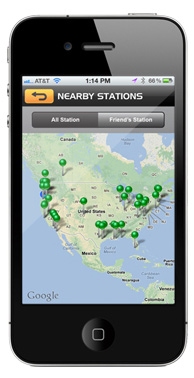

It outputs one of 26 different voltages, which each correspond to a compass direction. The wind vane doesn't have a gnome - it has eight switches connected to differently sized resistors, which can be closed in various combinations depending on the position of the wind vane. More frequent button presses mean more wind and rain! The rain gauge and anemometer behave like digital switches that output repeated digital on/off signals - as if a diligent, weather monitoring gnome was frantically hammering a button to report the wind speed or how much it was raining. Wind and rain sensors are mechanical sensors made up of magnets, switches and resistors. These sensors consist of a tipping bucket style rain gauge, an anemometer to measure wind speed and a wind vane to measure wind direction. We've included them on Weather HAT so you can connect up a set of wind and rain sensors ( sold separately). The chunky grey connectors on the left hand side of Weather HAT are RJ11 connectors (you might remember these from when we had to plug 'telephones' into 'copper wires'). The LTR-559 is the same sort of sensor that's next to the camera in your mobile phone that automatically dims and brightens the screen depending on the light level and disables the touchscreen when it's next to your ear. This sensor can read the ambient light level in Lux (a unit of light intensity) and can also act as a proximity sensor. Our library measures temperature in degrees celsius, relative humidity as % water content of the air and atmospheric pressure in hPa (hectopascals). On Weather HAT, the BME280 sensor is at the right hand corner of the board, so as to be as far away from the Pi's CPU as possible. The BME280 is a neat little all-in-one weather sensor that measures temperature, pressure, and humidity. What's on Weather HAT?īME280 temperature, pressure, and humidity sensor In this tutorial, we'll go through what the different parts of the board do, how to attach it to your Raspberry Pi, how to install the Python library and take a look at what some of the code examples do. A big advantage of using a Raspberry Pi to collect weather data is that there are lots of interesting Python APIs available, so it's straightforward to post your weather data into cloud data services or contribute to collaborative weather forecasting efforts like Weather Underground. It's an affordable, hackable, fully customisable alternative to traditional weather stations. Designed for keeping a weather eye on the great outdoors (see what we did there), Weather HAT equips a Raspberry Pi with the functionality to measure temperature, pressure, humidity, light, and (with additional sensors) wind speed, wind direction and rain.


 0 kommentar(er)
0 kommentar(er)
